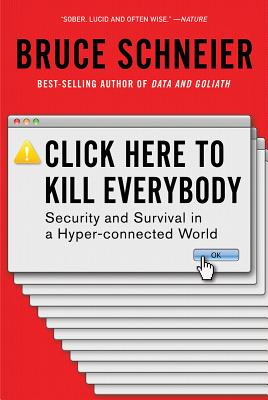What do you think?
Rate this book


336 pages, Paperback
First published May 22, 2019
The Internet+ is coming. … It'll change security, too: more autonomy, more real-world consequences, fewer off switches, and much greater risks. … We need to start building security systems as robust as the threats. We need laws and policies that address the threats and the economics and the psychology properly.Schneir goes on to say,
It's important to talk now about what good Internet+ security policy will look like, when we have time to do it slowly and carefully, and before a catastrophe occurs. … I argue for good government doing good. This can be a tough argument to make, and there is a lot of potential for government to be ineffective or even harmful. But I don't see any other option.I read this to increase my knowledge of digital security and privacy.
Former National Cyber Security Center director Rod Beckstrom summarized it this way: (1) anything connected to the Internet can be hacked; (2) everything is being connected to the Internet; (3) as a result, everything is becoming vulnerable.Everyone Favors Insecurity
I think that people moving their data and processing into the cloud is our most fruitful avenue for security improvements. … Cloud providers have both the security expertise and economies of scale that individuals and small businesses black, and anything that gives people security without their having to become security experts is a win.Disconnecting systems can enhance security. Separate, distributed systems can be less susceptible to attack the large, centralized, interconnected systems.
Government is by far the most common way we improve our collective security, and it is almost certainly the most efficient. It's how we change business incentives. It's how we pay for common defense. It's how we solve collective action problems and prevent free riding.How Governments Can Prioritize Defense Over Offense